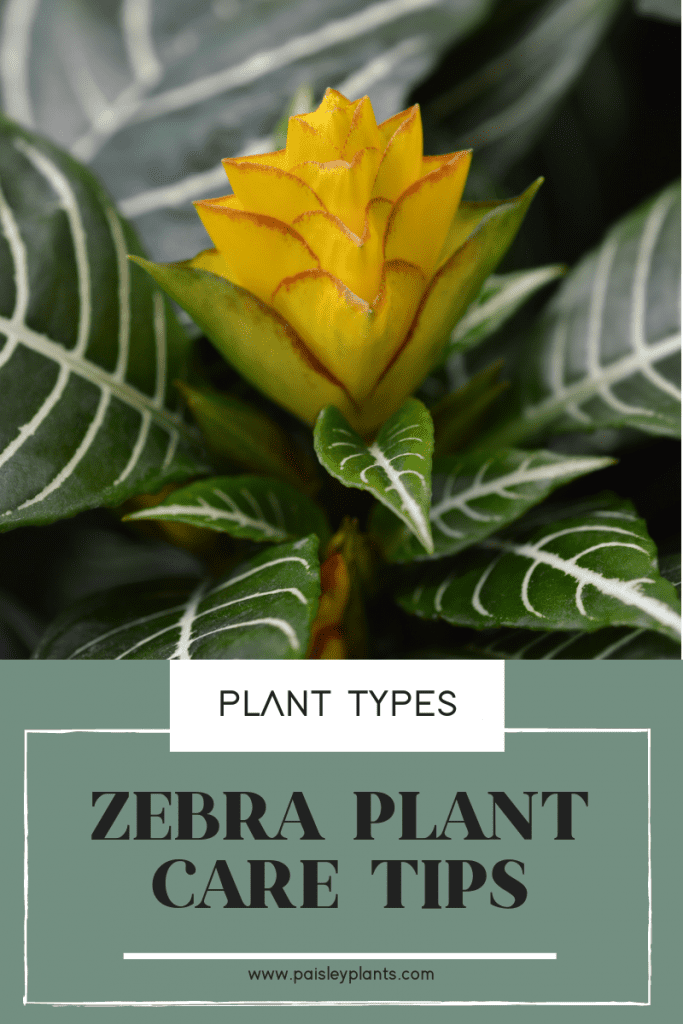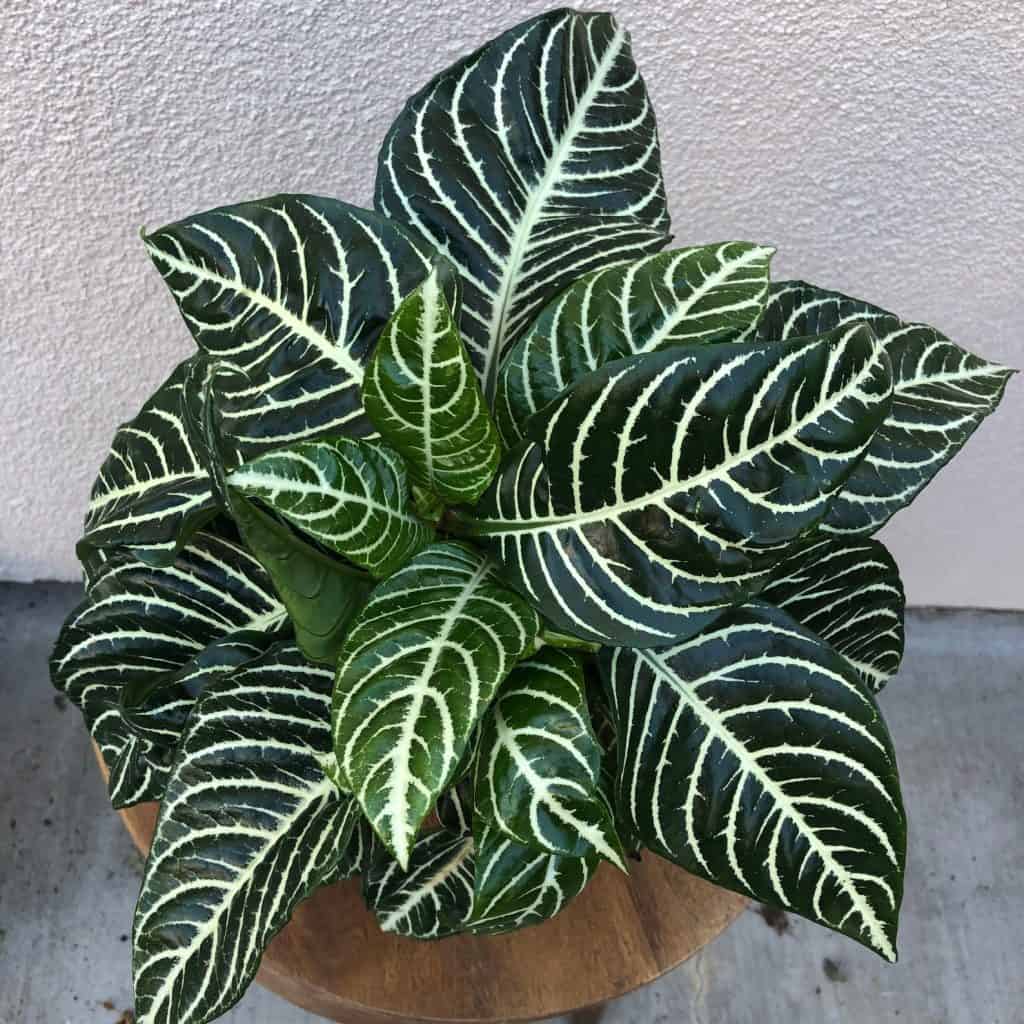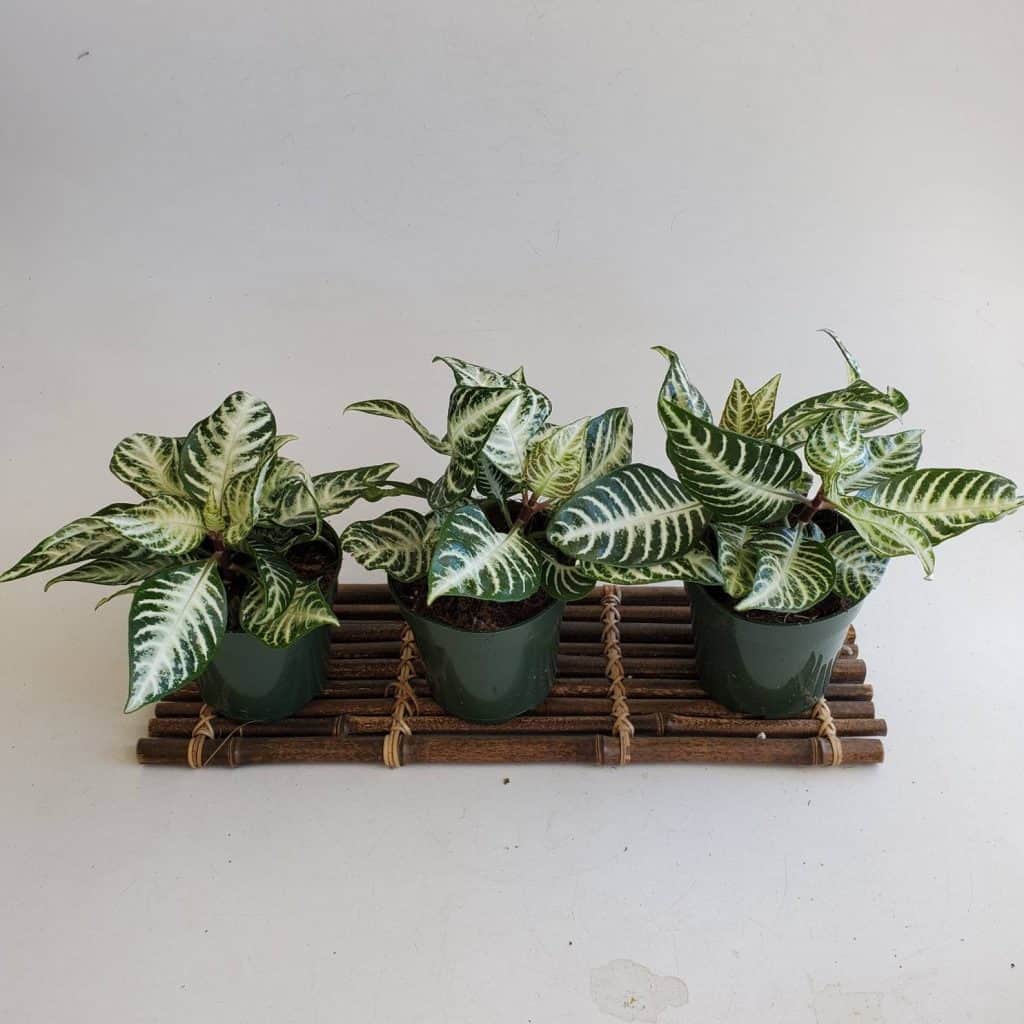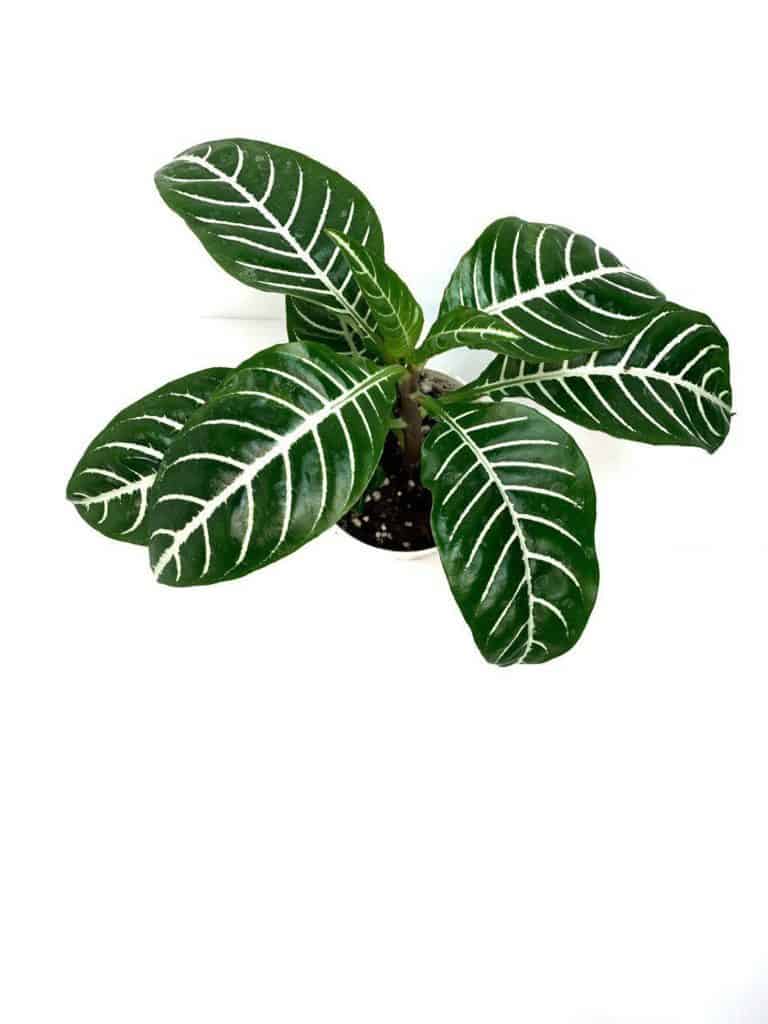Do you love plants AND a challenge? Then you might be ready for a zebra plant. This gorgeous houseplant is notoriously temperamental — but that’s what makes it so fun for plant lovers!
The zebra plant definitely adds a chic and modern vibe to your home. Its dark green leaves with thin white stripes are an absolute head-turner.
And when a zebra plant blooms, prepare to gasp out loud. The elegant and lithe golden flowers, with their four-sided yellow spikes, reach several inches long and will only last a few days. The bracts, however, will remain for a couple of months.
If you own or are planning to buy a zebra houseplant and you want to know how to care for it, then look no further. Here’s everything you need to know about a zebra plant. Don’t worry — it’s worth the challenge!
Table of Contents
How To Take Care of Your Zebra Plant

Zebra Plant Background
Aphelandra squarrosa, which belongs to the plant species of the family Acanthaceae, originated in the Atlantic Forest of Brazil. Boasting verdant, wide, and glossy leaves with striking white veins, it has eventually come to be simply known as a zebra plant.
During the Victorian era, the zebra plant found its way into homes as a stylish houseplant. It needs proper care or it will lose leaves or become leggy.
Several other plants are also commonly called “zebra plants,” so you might find succulents, cacti or aloe going by that name. But the one most commonly associated with the term is the Aphelandra squarrosa. This is the basic zebra plant with wide leaves, white stripes, and a saffron-colored flower that may or may not bloom.
Water
You should water your zebra plant with lukewarm (tepid) soft water. Soft water is treated water that only contains sodium. You don’t want to use hard water, which contains dissolved minerals.

Image via Home Plant Inspiration (where you can buy this!)
If you don’t have soft water, just leave hard water (like tap water) out overnight or for 24 hours to allow the chemicals and minerals to dissipate.
The potting soil should always be kept moist — never waterlogged. Using tepid or room-temperature soft water, wet the soil. Never leave the soil to dry, as the leaves will droop or become straggly or leggy.
Don’t water the leaves directly because it may lead to crown rot, and empty any excess water from the saucer to avoid root rot.
Light Requirements
Your zebra plant likes ultra-bright but indirect light. You can keep it on a shady porch or by the window. Just make sure it’s not exposed to too much heat or direct sunlight; otherwise it will wrinkle.
Come wintertime, the zebra plant is content with moderate light.
Temperature/humidity
The zebra plant thrives in temperatures between 65 and 75 degrees Fahrenheit. If it’s exposed for too long to temperatures below 60 degrees, the leaves will loosen and fall off.

Image via Elemental Bonsai Garden (Where you can purchase it!)
The zebra plant’s origins are in the rainforest of Brazil, which has very high humidity. Now that it lives inside your home, it still demands the rainforest atmosphere — between 60% and 70% humidity.
If the humidity is too low, the leaves may turn brown on the edges and new leaves will have problems growing.
One hack to increase the humidity level around your zebra plant is to place it on a tray of wet pebbles. You can also put all your humidity-loving plants together to create a wetter atmosphere around them.
Soil
It shouldn’t come as a surprise that this picky plant is picky about its soil. The zebra plant wants a highly organic or peat-based potting soil. They grow well on a 50/50 mix of your regular potting soil and African Violet soil. The key reason for this is adequate drainage — and soil that attracts and retains moisture.
Fertilizer
In the spring or summer months, feed your zebra plant with a balanced fertilizer every two weeks. In the wintertime, you can feed it just once a month. Use fertilizer that is appropriate for both foliage and flowers.
Pests and Disease
Common pests for the zebra plant include spider mites, mealybugs, aphids and whitefly.

Image via Papelly
You’ll know you have a pest problem when the stems have white clusters on them or a smattering of yellow spots on the leaves.
If this happens, use a cotton swab soaked in alcohol to simply wipe the pests off. Then treat the infected leaves with a spray of water and systemic insecticide.
Fungus
Another threat is fungus — especially since zebra plants thrive in high humidity levels. Fungus gnat infestations can happen, which will weaken the plant and stunt its growth.
If your plant has weird and unusual growths, it’s probably fungus. Fungus can also cause rotting, molds, powdery mildew, black spots, and blotches. Some fungi are sneaky and will attack the roots, which will cause your plant to wilt and die.
To treat a fungus-stricken zebra plant, use baking soda. It’s a natural and effective antifungal. Dissolve 1 teaspoon of baking soda into a quart of water. Mix with a few drops of liquid soap (not laundry detergent), stir, pour into a clean spray bottle then spritz onto the plants.
Propagating
Growing zebra plants in your home is easy-peasy. Propagating can be done using one of three methods: air layering, stem cuttings, or water propagation.
Air Layering
Step 1: Pick a healthy stem.
Step 2: Remove leaves from the center of the stem so the bare stem is about 2 inches.
Step 3: Make an incision halfway into the stem, and place a toothpick in the incision to keep it open.
Step 4: Slather the area with rooting hormone.
Step 5: Get a moistened sphagnum moss. Wrap the sphagnum moss around the wounded spot in the stem.
Step 6: Using a plastic wrap, secure the punctured stem with the sphagnum moss wrapped around it. Tie both ends of the plastic to secure it tightly. You don’t want moisture to escape.
Step 7: Wait a month to six weeks. When you see roots appearing in the moss, cut the stem.
Step 8: Repot and keep in high humidity.
Cuttings
Step 1: Get cuttings that are 4 to 6 inches tall, and place them into a mix of perlite and moist peat.
Step 2: Cover in plastic to retain moisture.
Step 3: Place in a shady spot, with indirect sunlight.
Step 4: Make sure that the temperature in the area is 70 to 80 degrees Fahrenheit.
Water
Step 1: Cut several leaves from the stem. It should be a clean cut.
Step 2: Allow the leaves to dry for several days
Step 3: Coat the cuts with rooting hormone.
Step 4: Get a piece of plastic wrap. Cut a small hole.
Step 5: Slip the leaf through the small hole. Place in a jar of water.
Step 6: Repot when a large amount of roots grow.
Repotting
Repotting is best done in the spring. Pick a pot that is about an inch wider than the original pot, but only if the plant is crowded. Otherwise use a small pot.
Brush away soil from the zebra plant’s roots. Be gentle so as not to damage them. Then repot in new or fresh potting soil.
Repotting inspires the plant to generate a new batch of blooms. Make sure the roots are compact.
Frequently Asked Questions
How do you make a zebra plant bushy?
If you want your zebra plant bushy or thicker, you need to upgrade its moisture level. To do so, water your zebra plant every few weeks by drenching the soil thoroughly with warm water.
Fertilizer is another hack to thicken those pretty leaves. Regular feeding of fertilizer will push the plant to have an abundance of flowers!
Should I cut brown tips off my zebra plant?
There are three reasons for the brown tips. It could be you are exposing your plant to too much sun, you are using too much fertilizer, or low humidity.
Yes, you should cut these brown tips. Use a pair of pruning shears. Make sure the shears are sterilized.
When will my zebra plant bloom?
You will see these breathtaking saffron flowers usually in late summer or early autumn. To encourage the zebra plant to bear flowers, you must put it under bright fluorescent light, or place it near a sunny spot (but not direct sunlight!).
Zebra plants want 12 weeks of bright light before they bloom.
Are zebra plants toxic?
If you have a cat or a dog, they are perfectly safe around zebra plants. The plants are non-toxic to animals.
Although very safe, there are very few people with allergies who experience skin irritation from the plant’s sap.
How long will my zebra plant last?
Zebra plants are difficult to care for, so even though they are perennials (and can, in theory, outlive you), they generally only last a few years. But by propagating your plant, you can keep it going for many years down the line.
Where to Buy Zebra Plants
If you’re looking to buy a Zebra plant, here’s a few options!
- Your local garden center or nursery (always our first choice!)
- Etsy (I’ve bought many plants from Etsy with great success)
- Walmart
I hope this helps you in mastering your Zebra Plant care!

